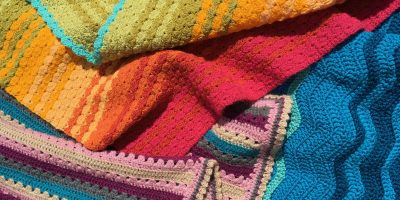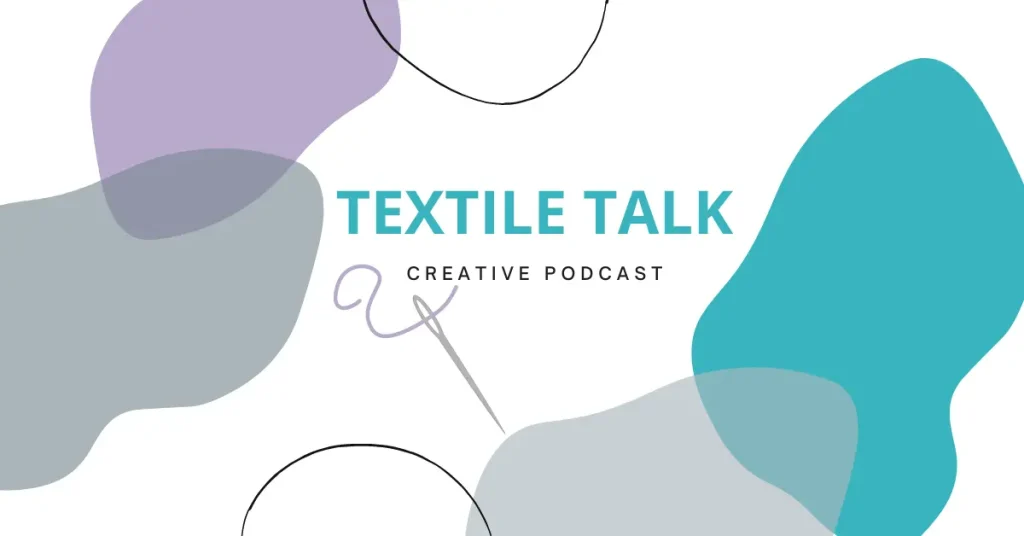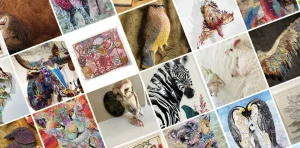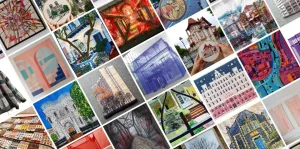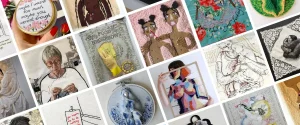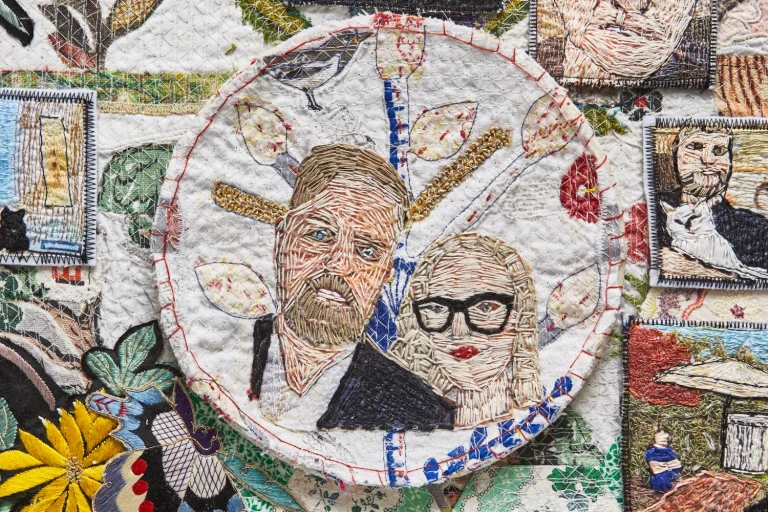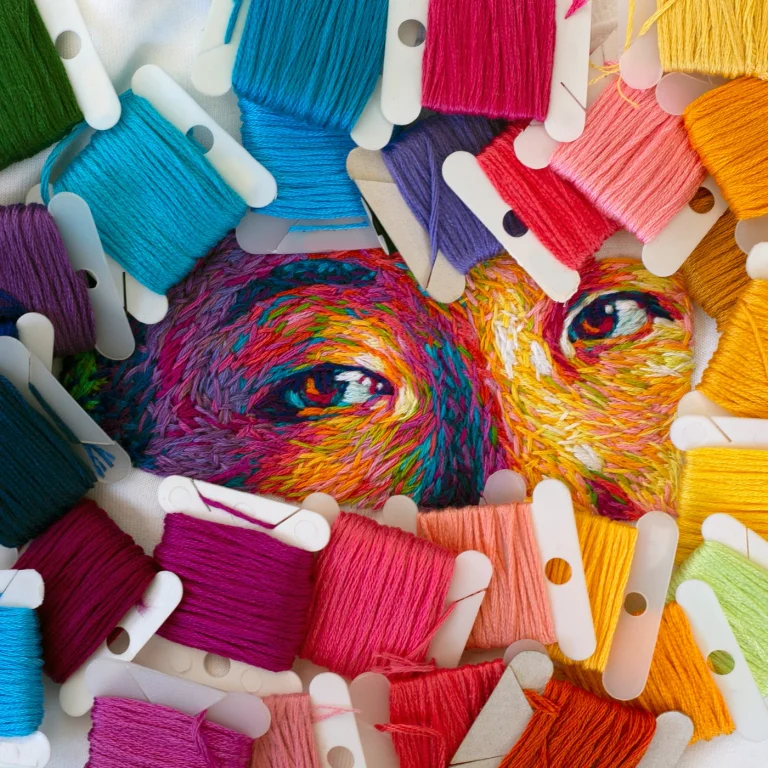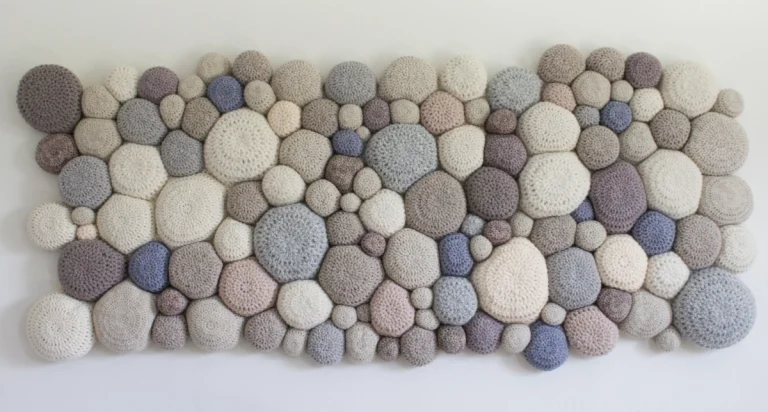Richard McVetis is a pioneering artist whose intricate hand embroidery redefines the boundaries of textile art. A graduate of the Royal College of Art, Richard’s journey into the world of stitched textiles began during his Art Foundation course, where his talent for detail and design was first recognized. Inspired by the dynamic potential of hand embroidery, he honed his craft at Manchester Metropolitan University’s renowned Embroidery program and later expanded his vision at the RCA.
Richard’s work is a poetic exploration of time, memory, and cosmology, with each piece meticulously crafted to capture the rhythms and patterns of existence. Drawing inspiration from scientific luminaries like Carlo Rovelli and Carl Sagan, as well as artists such as Agnes Martin and Rachel Whiteread, his creations weave together themes of physics, geology, and the universe’s mysteries. His unique aesthetic marries precision with imperfection, reflecting the meditative and tactile nature of embroidery.
What sets Richard apart is his mastery of three-dimensional embroidery, transforming textiles into sculptural forms that engage with space, light, and movement. His series “There are Patterns There” exemplifies this innovative approach, using textiles to reshape physical environments and invite deeper connections with the material world.
A celebrated artist with exhibitions around the globe, Richard continues to push the boundaries of his medium. He is currently preparing for a major exhibition at Make Hauser & Wirth in 2025, promising more ground-breaking explorations in textile art. With his ability to infuse thread with profound narrative and meaning, Richard McVetis remains an inspirational figure in contemporary art, offering timeless reflections on the interconnectedness of life and the cosmos.
For anyone seeking inspiration, his story and creations are a powerful reminder of the boundless possibilities within the humble thread.
Richard McVetis
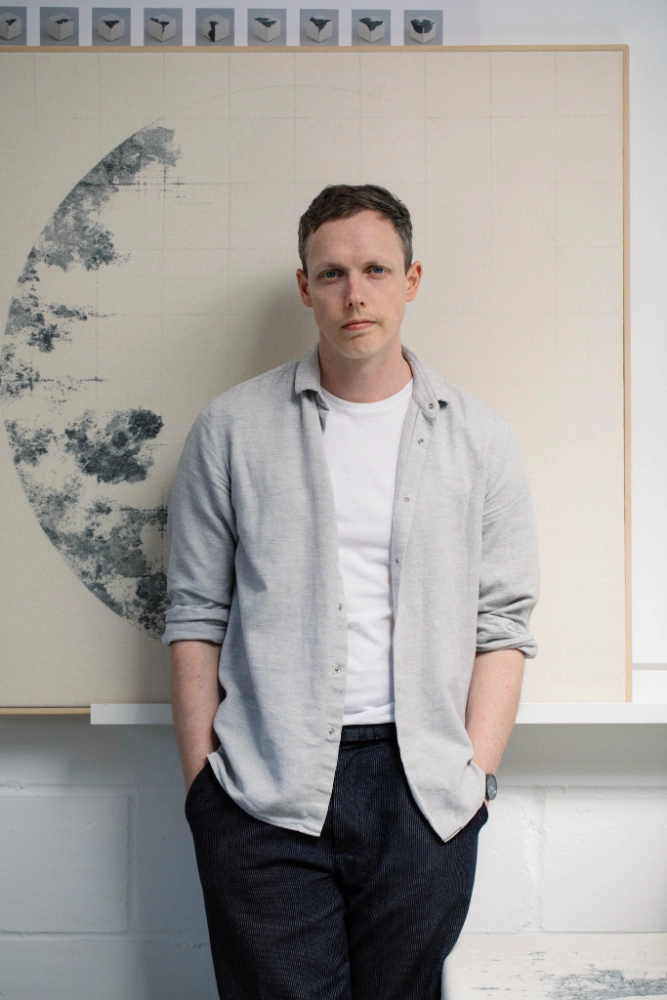
“Making is a way of thinking, driven by a deep fascination with the language of time, geology, and cosmology—capturing traces of memory and experience in thread.”
Can you tell us about your journey to stitched textiles?
I didn’t truly discover textiles as an art medium until my Art Foundation course. Before that, I focused on drawing and painting and had an interest in graphic design and architecture. I remember an interview with one of the foundation tutors; as he reviewed my A-level portfolio, he immediately suggested I would find a home within textiles. From that point on, it felt inevitable.
My incredible Foundation tutor Amanda Clayton – herself a fantastic artist – suggested I visit the Embroidery Degree at Manchester. After visiting the Embroidery degree show at Manchester Metropolitan, I was excited by the students’ creations and how they challenged the definition of Embroidery. I applied and was accepted, but at the end of my first year, I really began to appreciate the potential of hand embroidery. That’s when my signature aesthetic began to develop.
After Manchester, I continued my studies at the Royal College of Art, focusing on Constructed Textiles. This academic background provided a solid foundation in both traditional techniques and contemporary approaches, allowing me to push the boundaries of textiles and hand embroidery as an art form.
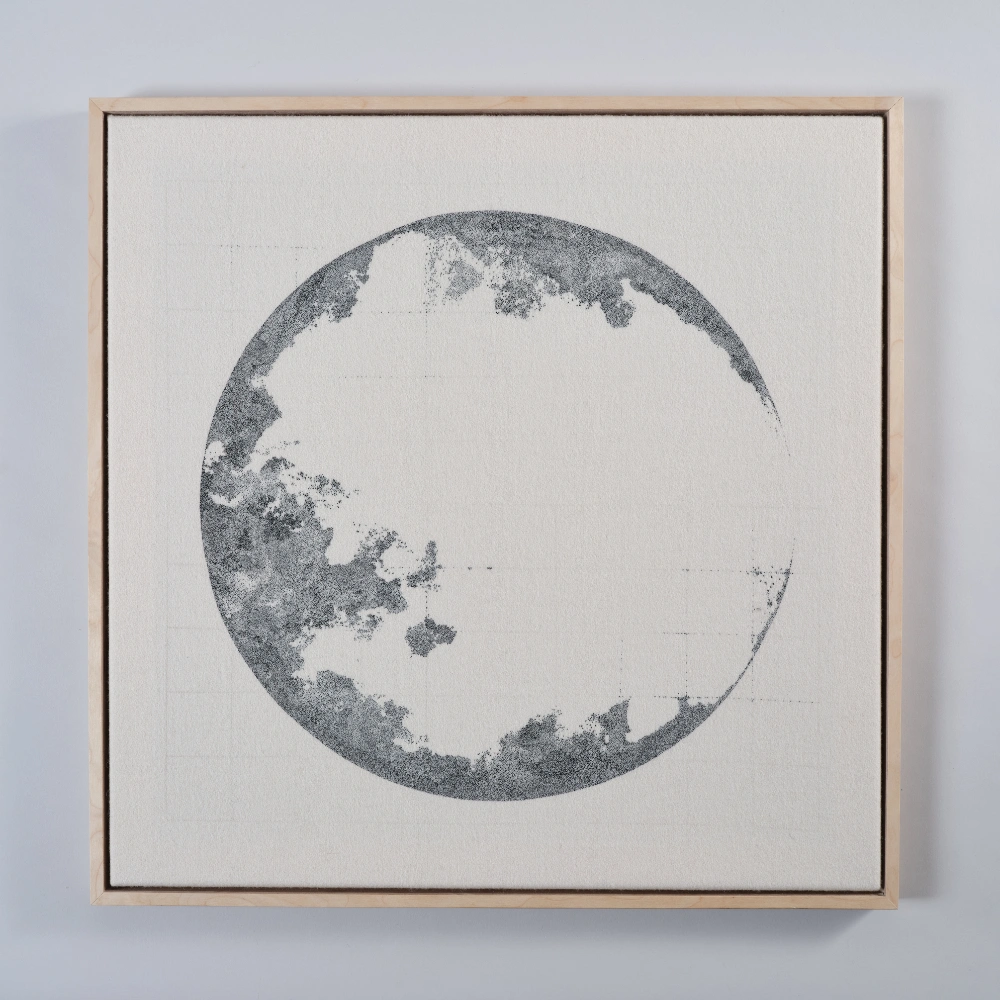
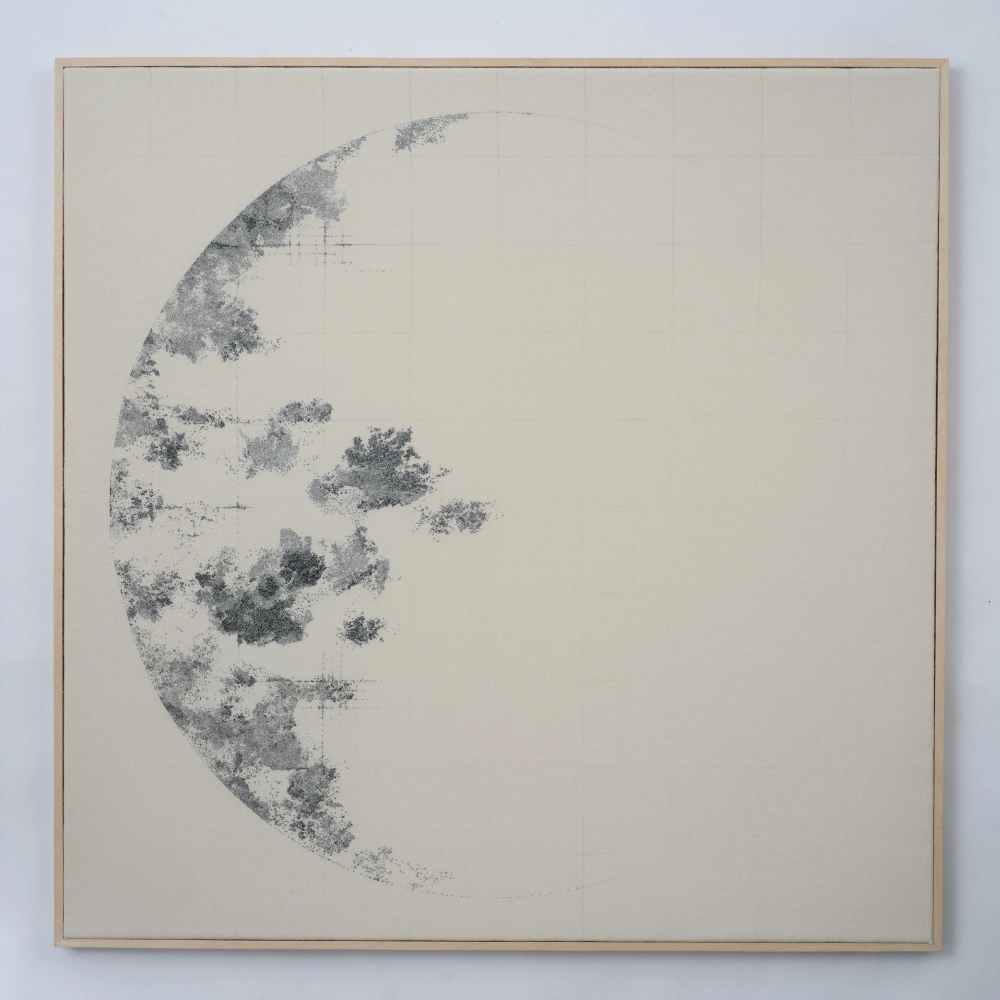
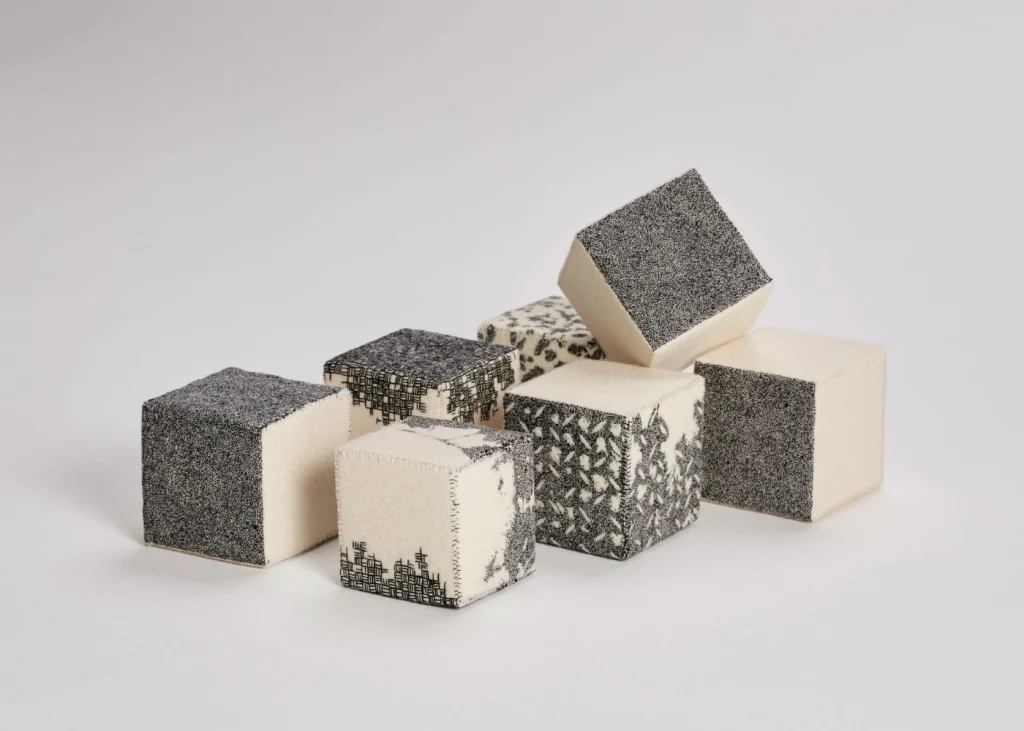
Where do you usually look for inspiration when starting a new piece?
Inspiration takes many forms: a memory, an artist, the urban environment, the process of making itself, and some I might imagine. I read a lot, and I’m drawn to the ideas of time and physics discussed in Carlo Rovelli’s books. I take great joy and solace in the work of Agnes Martin, Rachael Whiteread, and Lenore Tawney. Currently, my work draws inspiration from Carl Sagan’s book Cosmos, echoing themes of patterns and processes and resonating with the profound search for life and meaning within the vastness of the universe.
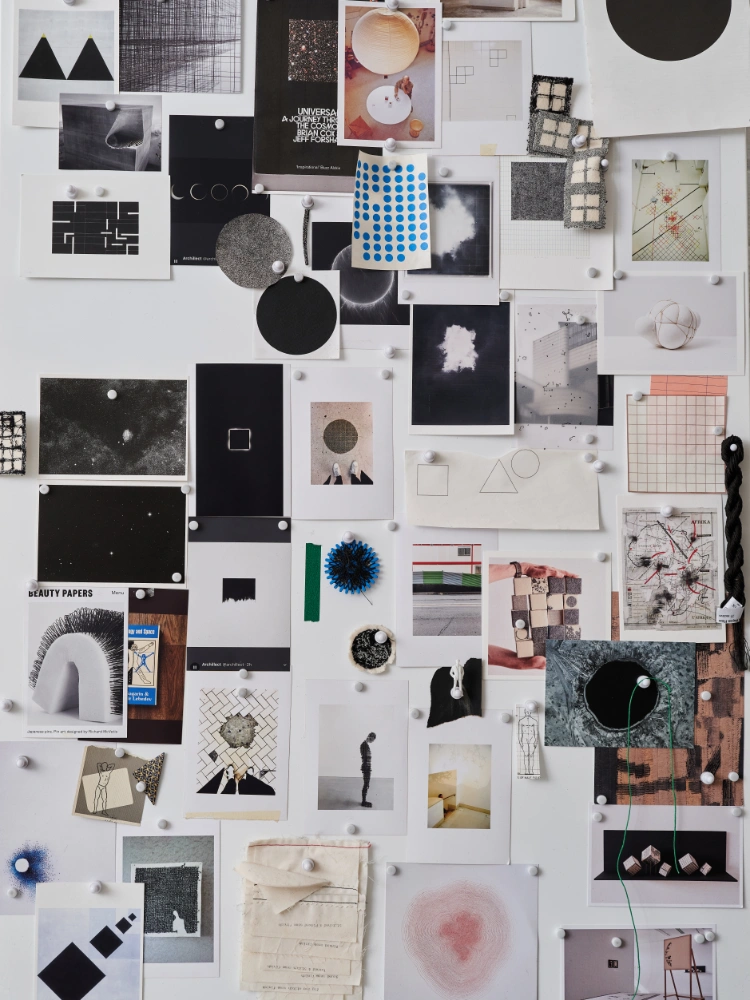
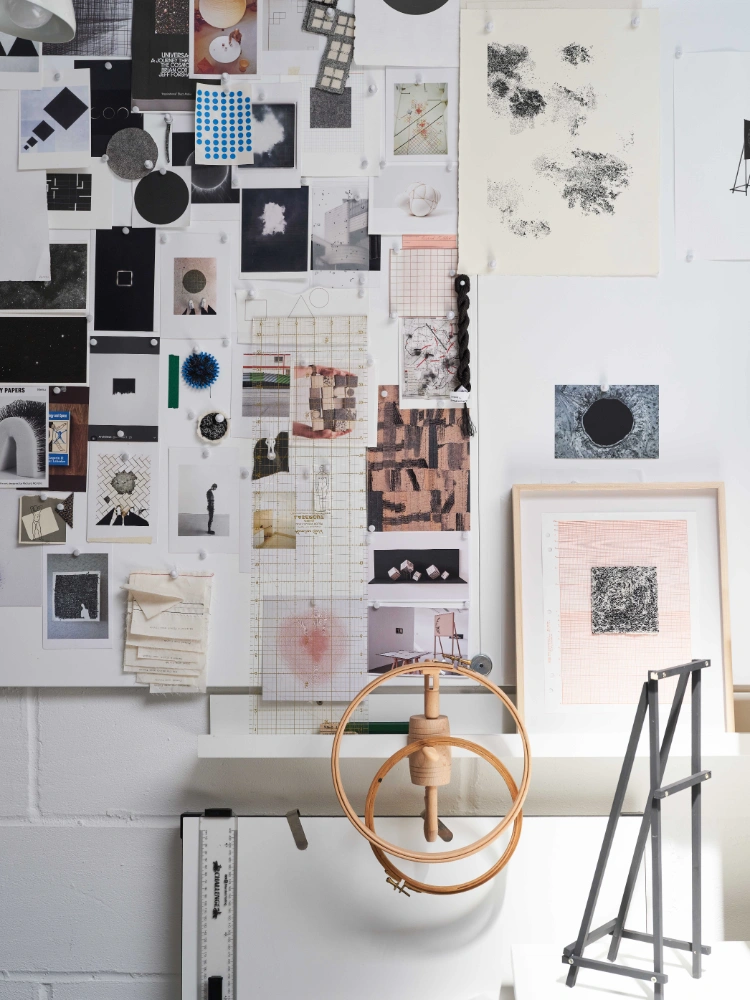
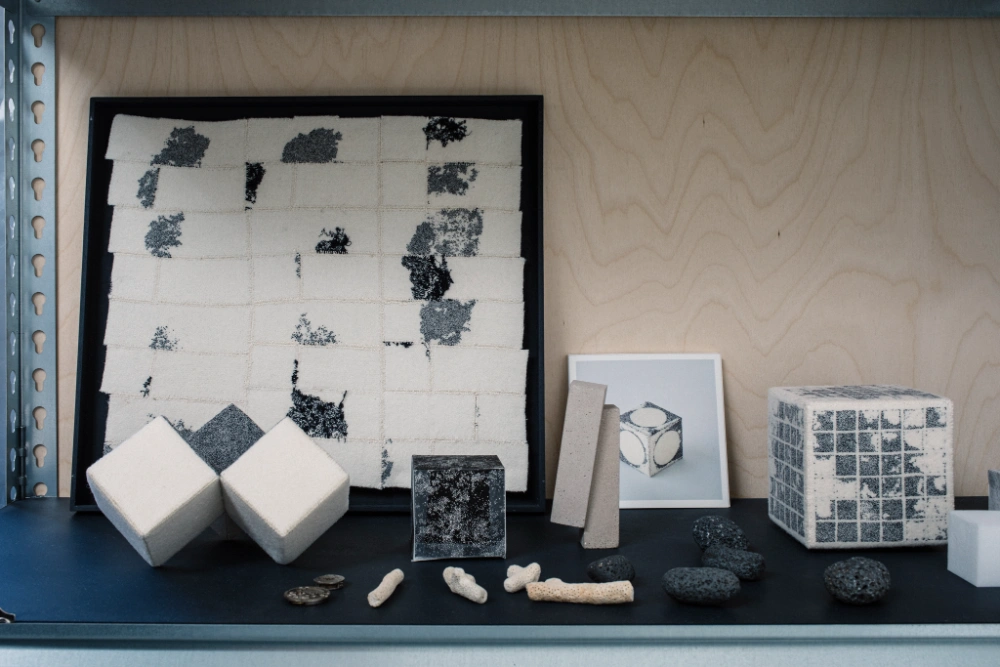
Can you tell us about your creative process – where do you design ideas originate, the fabrics, threads and stitches you use to create your pieces.
My creative process begins with observing patterns and rhythms around me. I’m inspired by hand embroidery’s slow, meditative nature, which allows me to reflect on time and the interplay between precision and imperfection. Much of my work stems from an interest in storytelling through material and technique—capturing traces of time, memory, and experience in thread. Making is a way of thinking driven by a deep fascination with the language of time, geology, and cosmology.
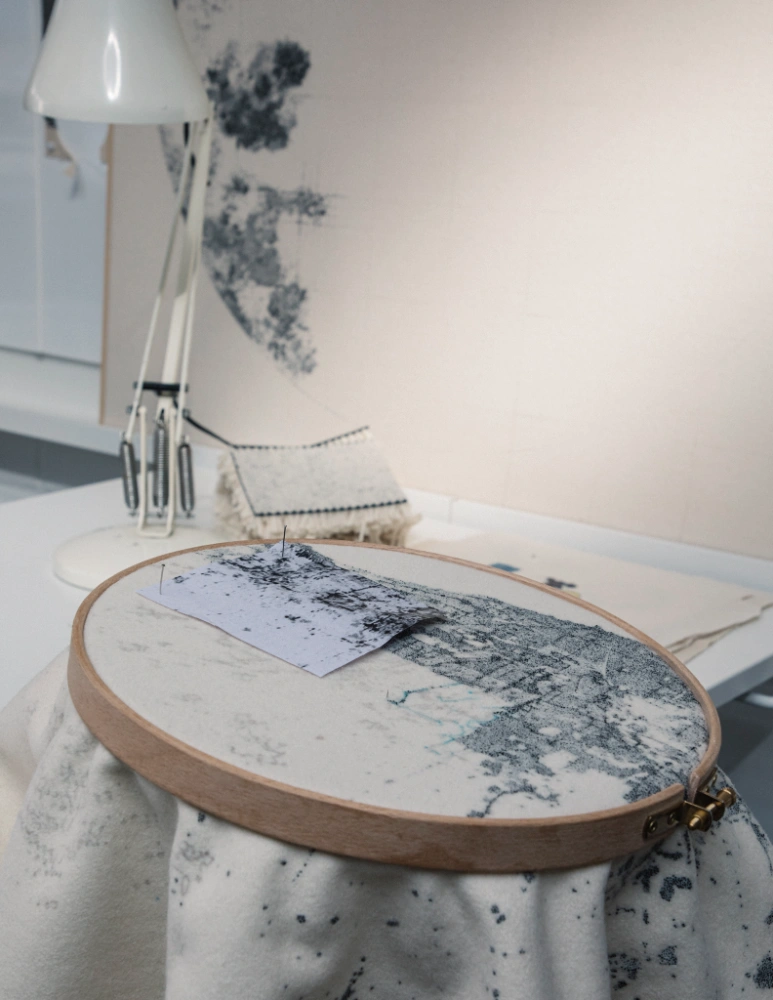
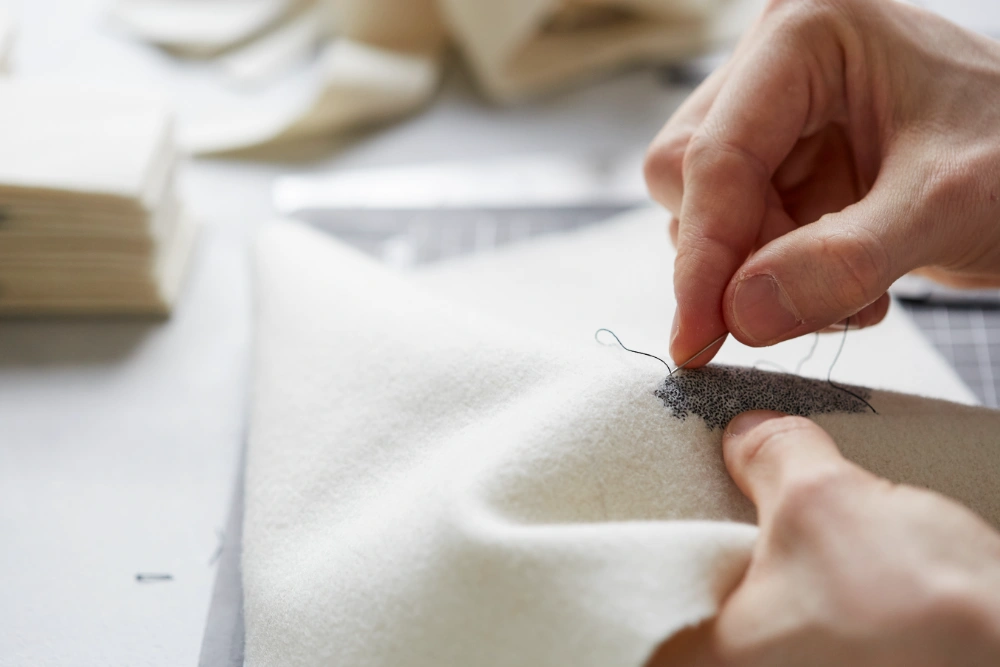
Many of your pieces are 3 dimensional, which adds an extra layer of complexity to the making and finishing process. Is there a reason for this?
Working in three dimensions allows me to explore the physical and emotional resonance of textiles more expansively. It pushes the boundaries of what hand embroidery and textiles can achieve, taking them beyond flat surfaces into sculptural and architectural realms. This approach introduces complexity to the making process, but it’s also an opportunity to challenge myself technically and conceptually.
The transition into 3D has allowed my work to engage more directly with space, light, and movement. It mirrors the ideas I’m exploring around patterns and how they manifest in the world—not just as something visual but as something tactile and immersive. For instance, in my recent series, ‘There are Patterns There,’ I use textiles to reshape physical environments. The complexity is essential—it reflects the intricate narratives I’m weaving into the work.
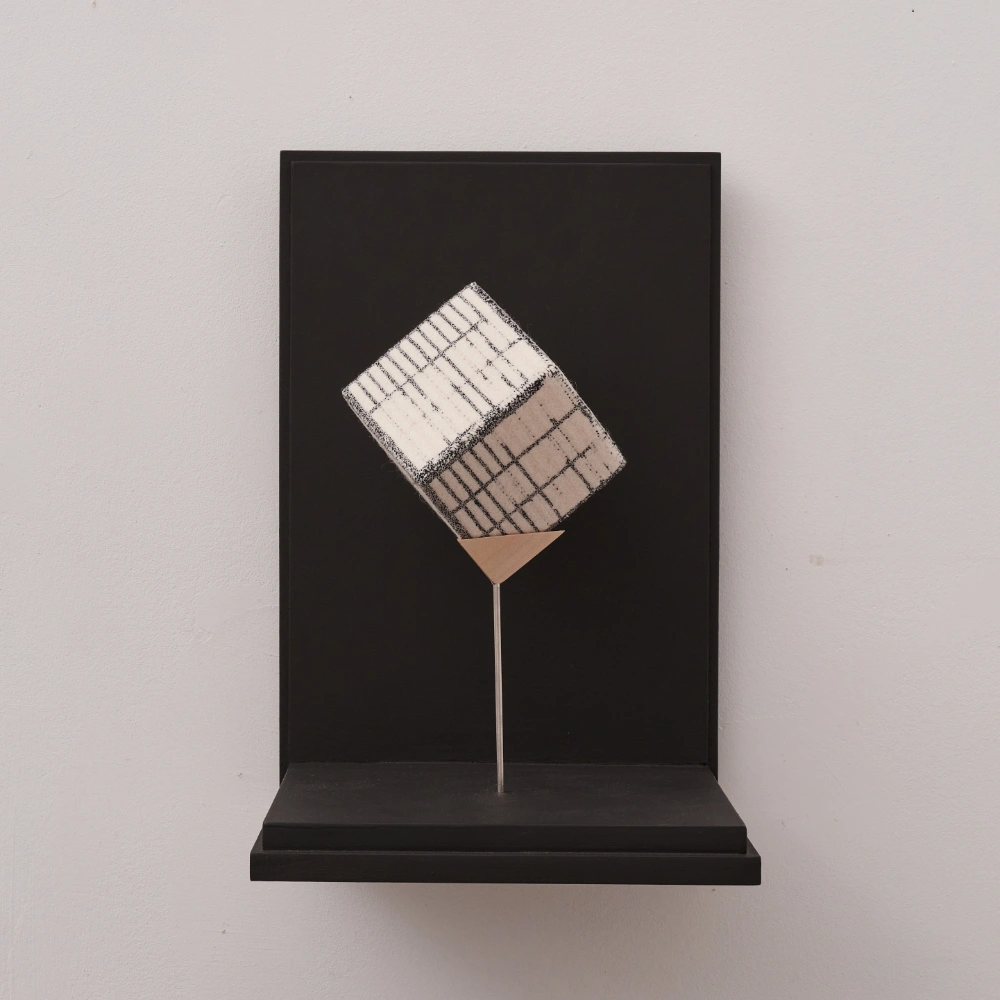
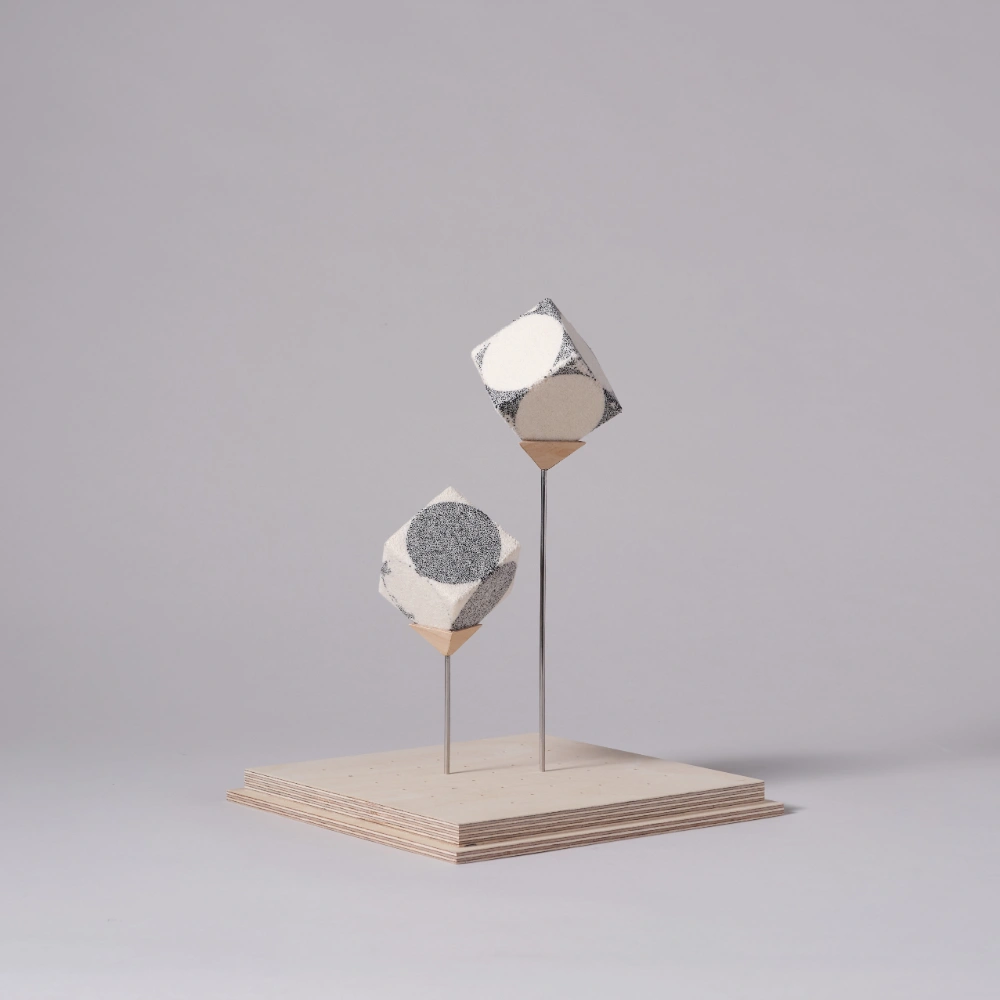
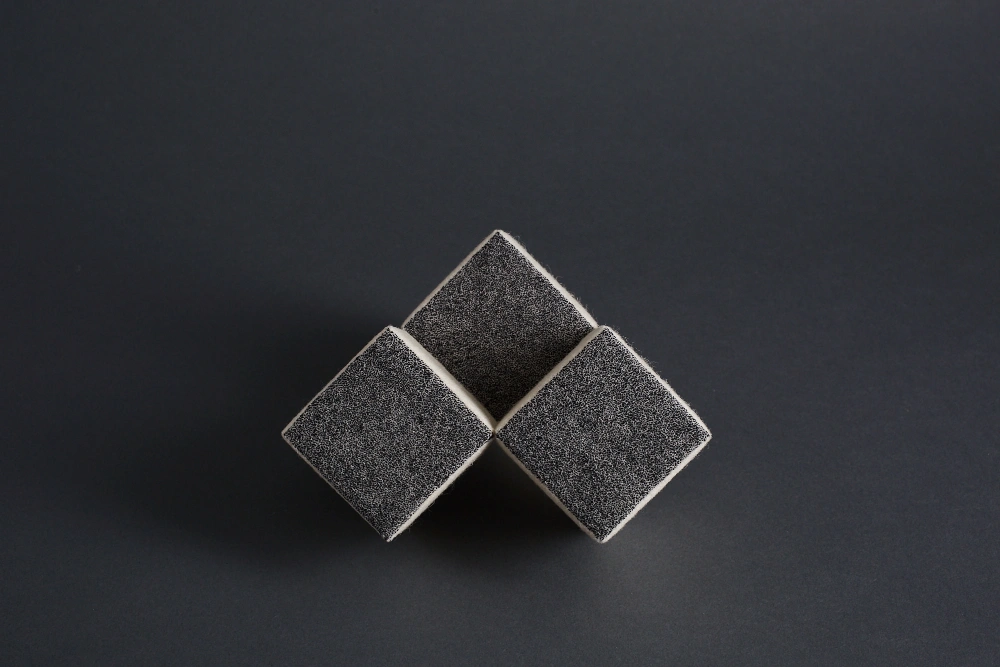
Do you have any words of advice for people who are in a creative/inspiration rut?
Inspiration doesn’t always come from a sudden spark or grand idea; more often, it’s about simply starting somewhere and letting the process lead you. Go back to the basics: draw, stitch, make—without any specific intention. Play, experiment, and allow yourself to create freely. This sense of playfulness often helps to get things moving.
Be curious. Ask questions and observe. Go for a walk and take note of what catches your eye—textures, colours, patterns, or shapes. Record these observations; they can be seeds for future ideas and reveal what interests you.
Sometimes, stepping away is just as important. If you’re feeling stuck, give yourself permission to take a break. Read a book, go for a walk or a run, and return with a fresh perspective.
And most importantly, disconnect from screens. Put your phone down and experience something in real life. There’s so much inspiration to be found when you engage with the world around you.
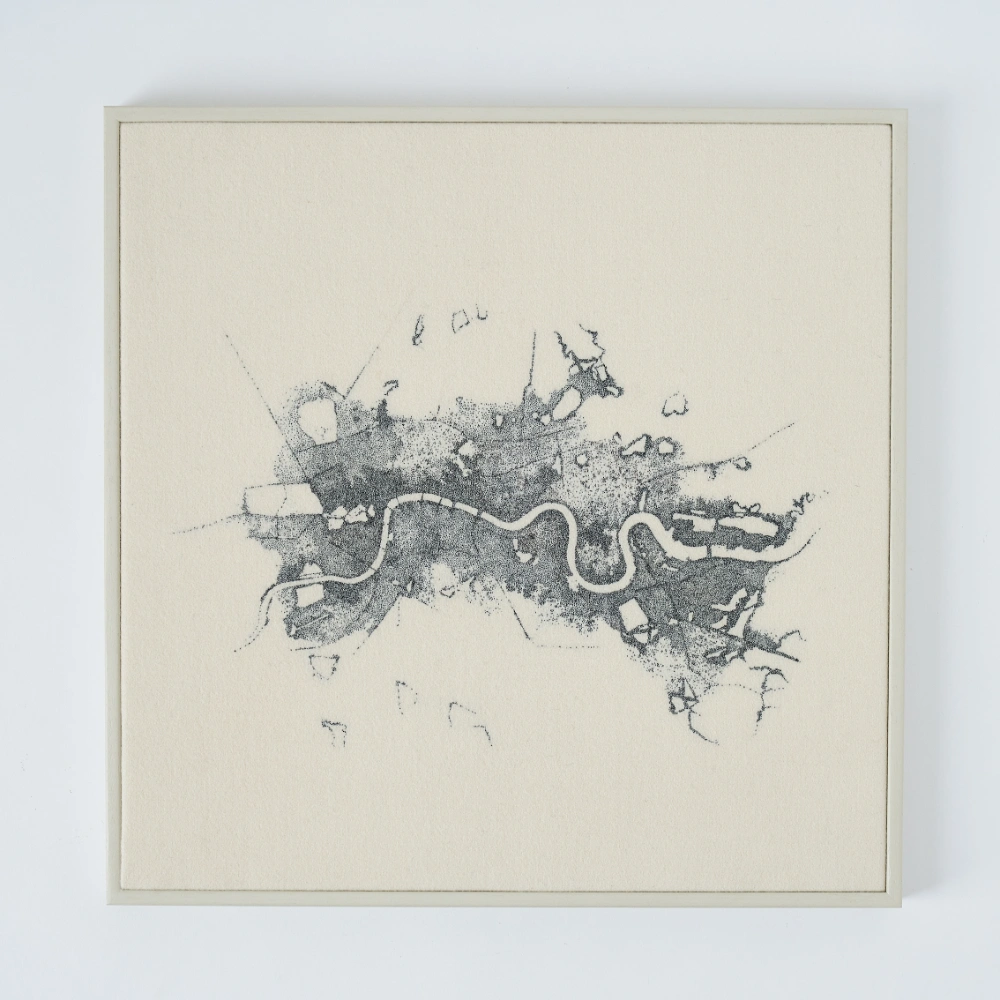
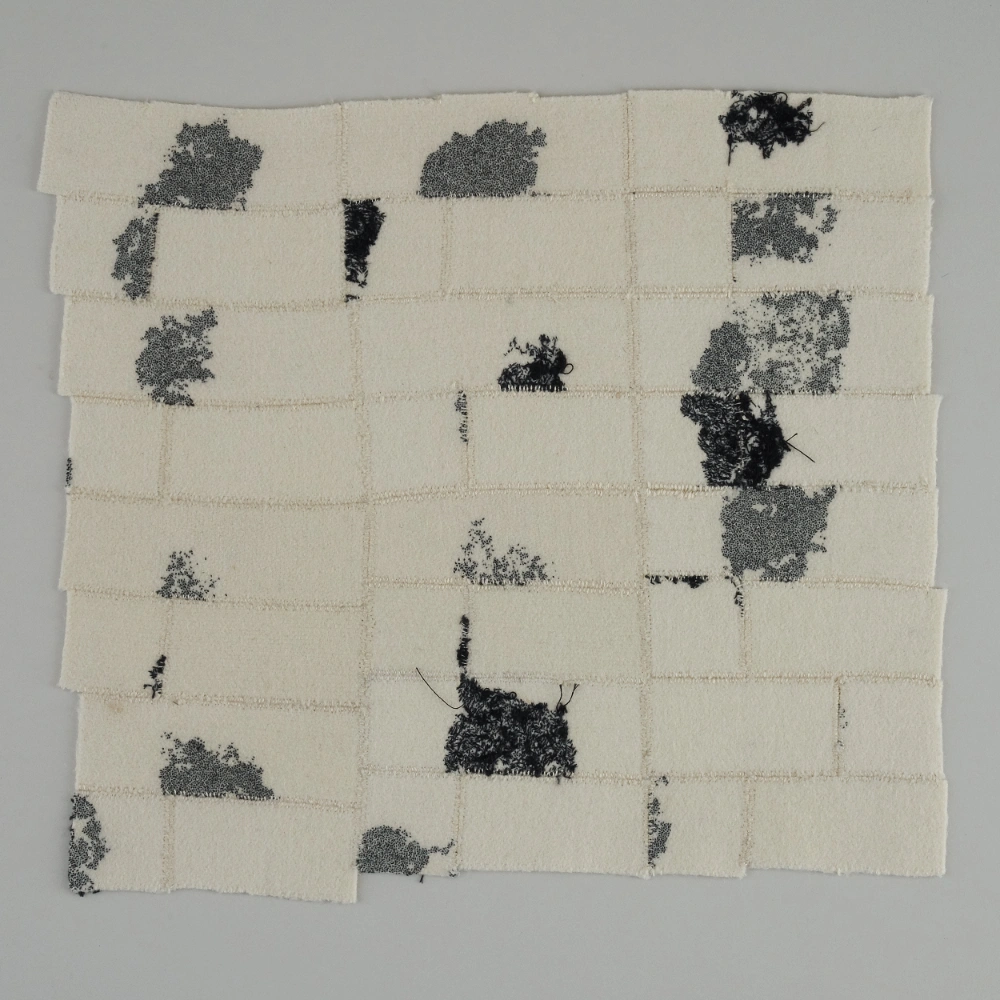
Key Takeaways
Revolutionizing Hand Embroidery
Richard McVetis uses hand embroidery to push the boundaries of textile art, creating intricate pieces that blend traditional techniques with contemporary themes of time, memory, and cosmology.
Three-Dimensional Mastery
His innovative approach to 3D textiles transforms embroidered surfaces into sculptural forms that engage with space, light, and movement, offering a tactile and immersive experience.
Inspirations from Science and Art
Influenced by the writings of Carlo Rovelli and Carl Sagan, and inspired by artists like Agnes Martin and Rachel Whiteread, Richard’s work explores patterns and the interconnectedness of the universe.
Renowned Educator and Artist
With a background from Manchester Metropolitan University and the Royal College of Art, Richard has exhibited his work internationally and continues to challenge the possibilities of stitched textiles.
Exciting Future Projects
Richard is currently preparing for a major exhibition at Make Hauser & Wirth in 2025, where he will further showcase his ground-breaking explorations in embroidery and constructed textiles.


